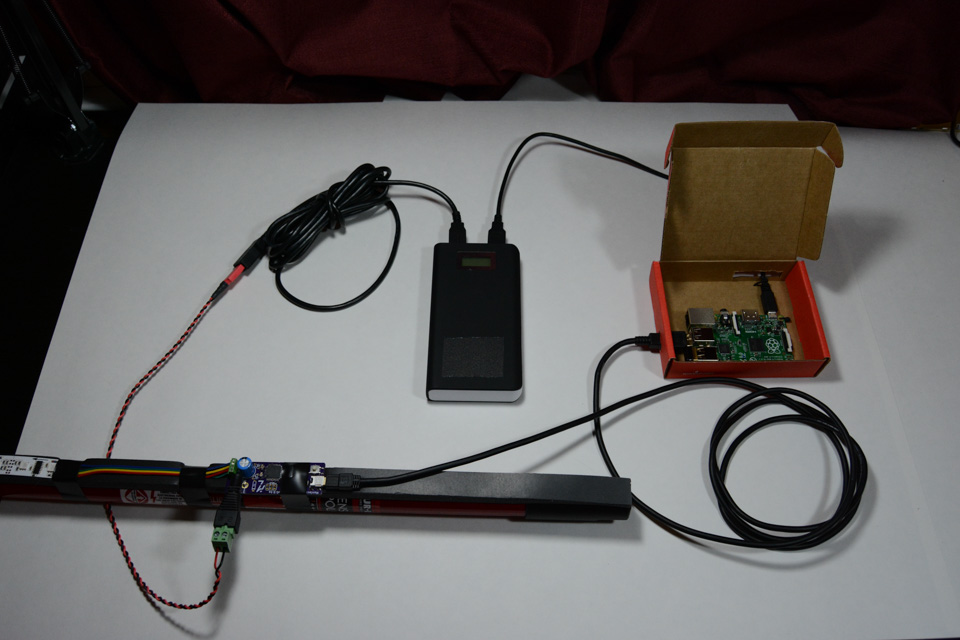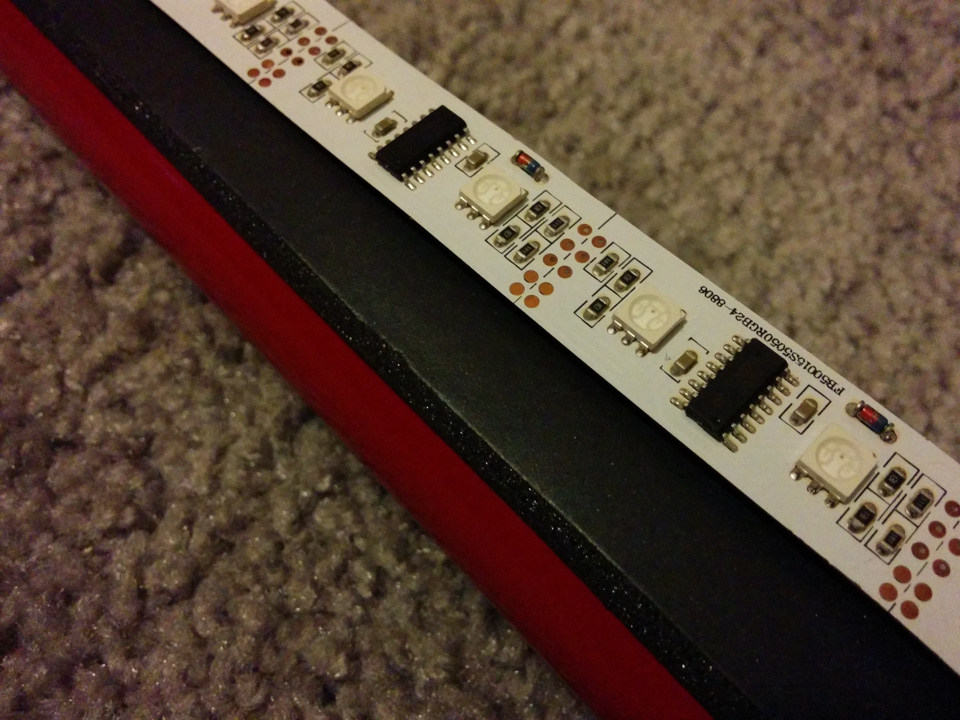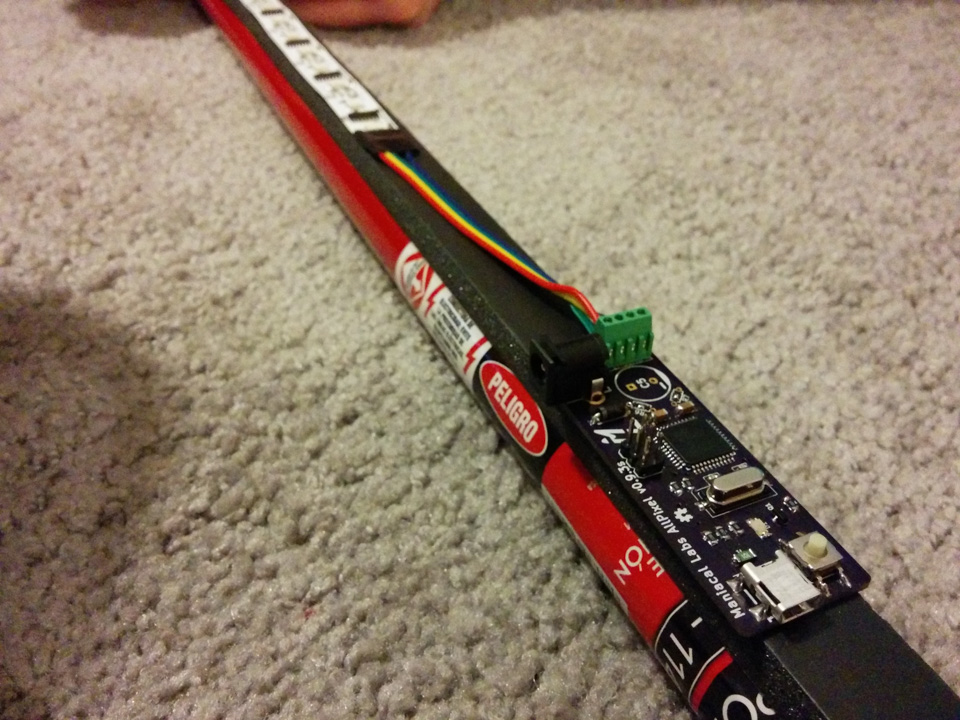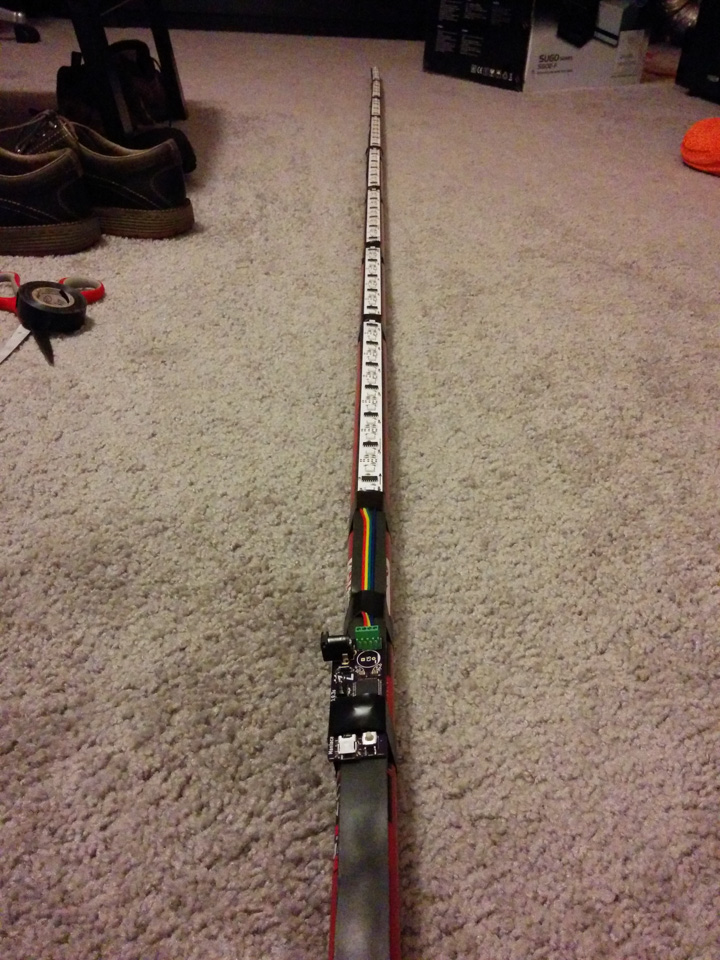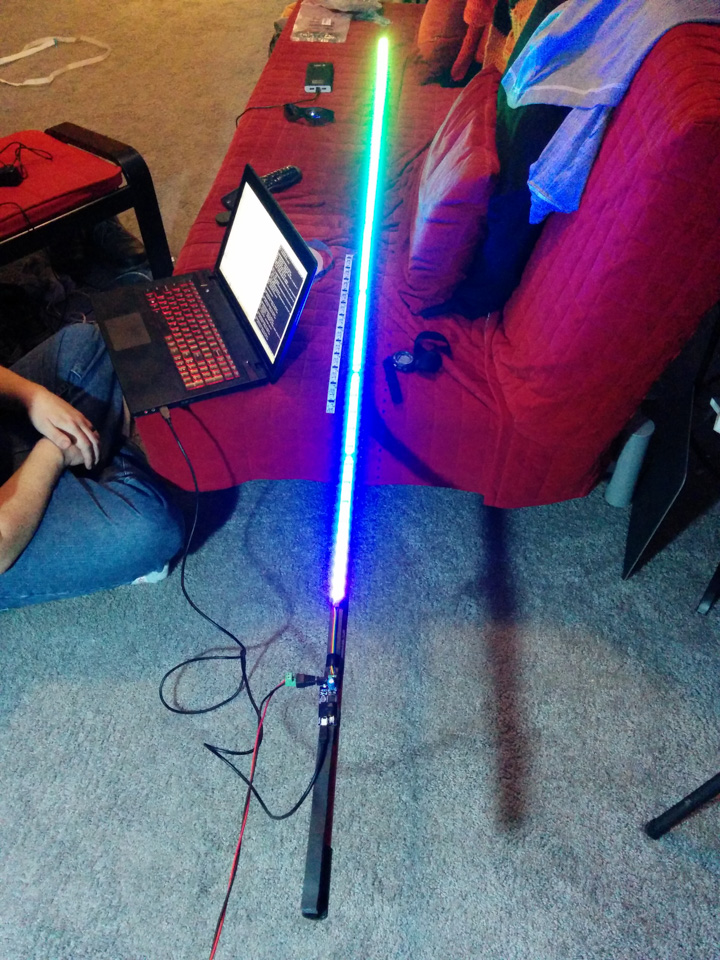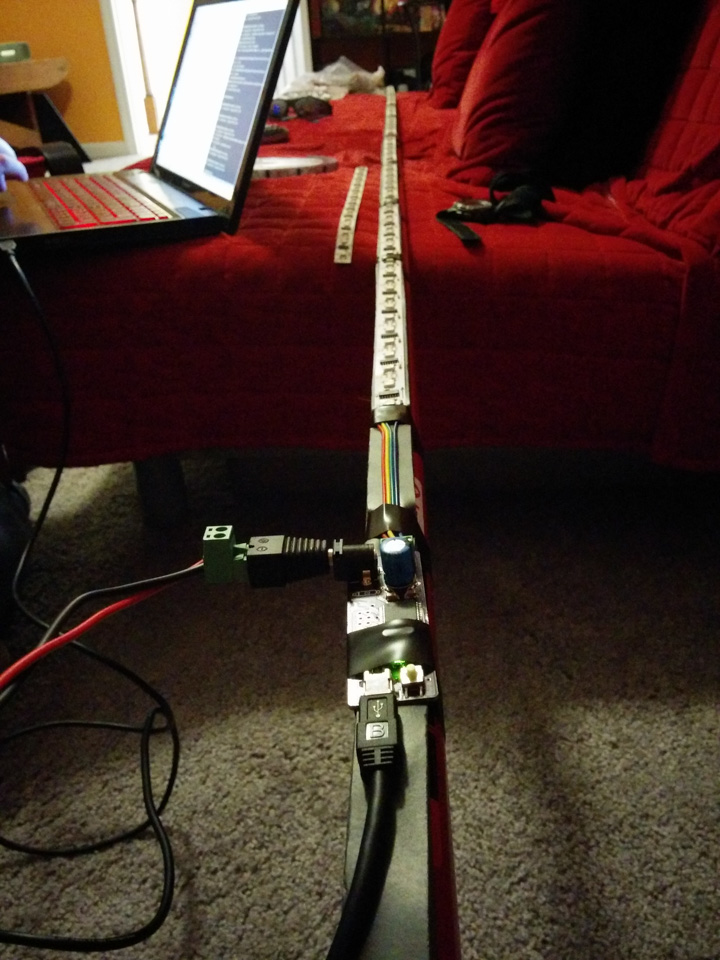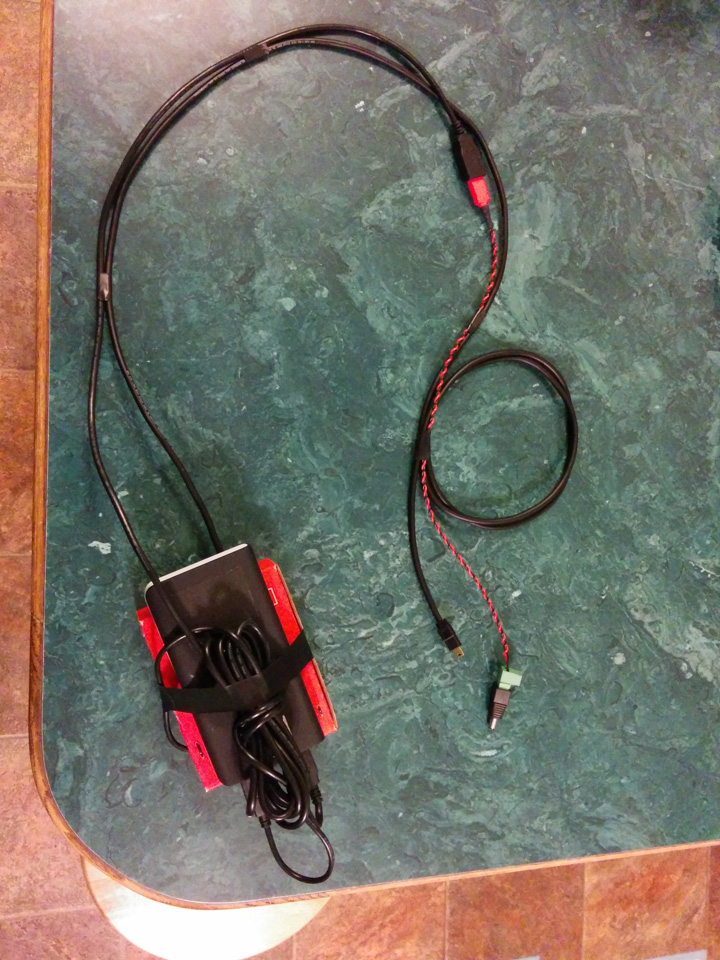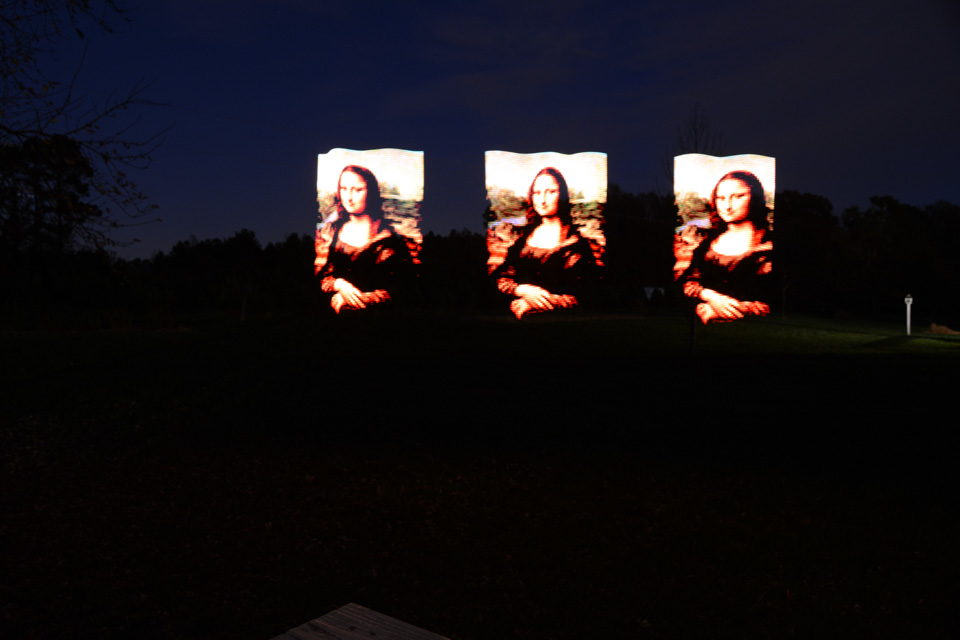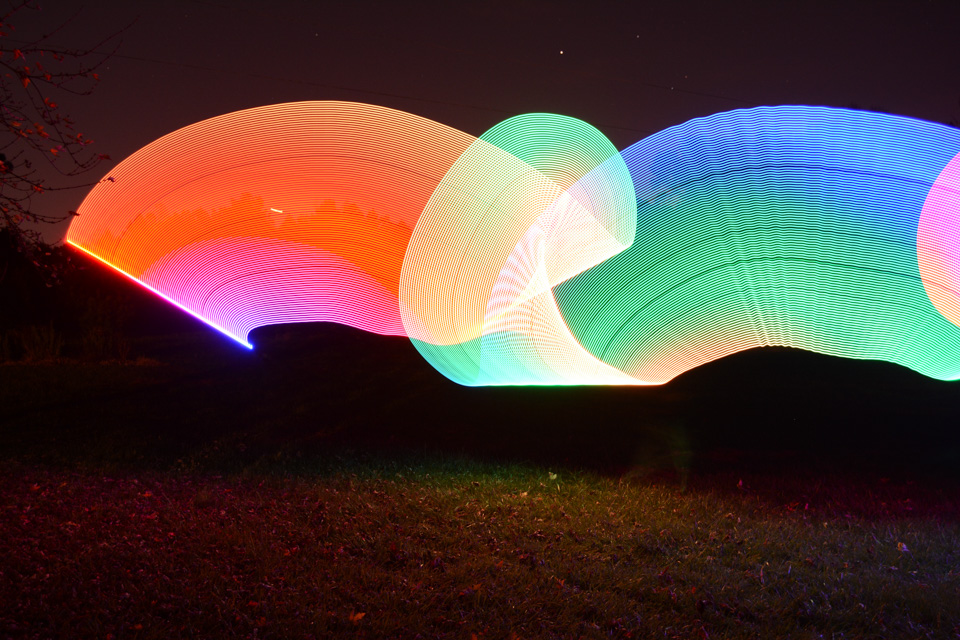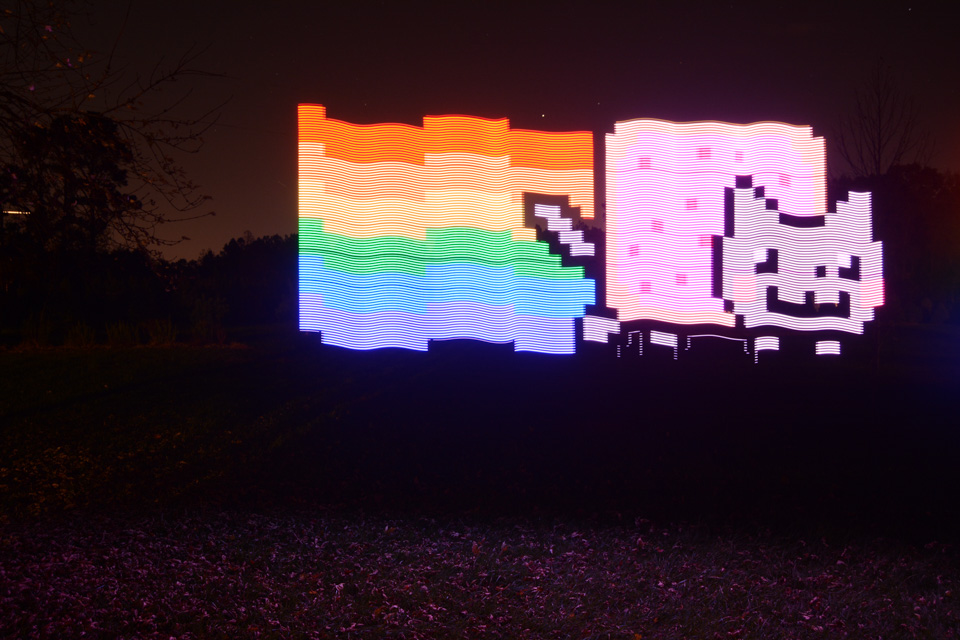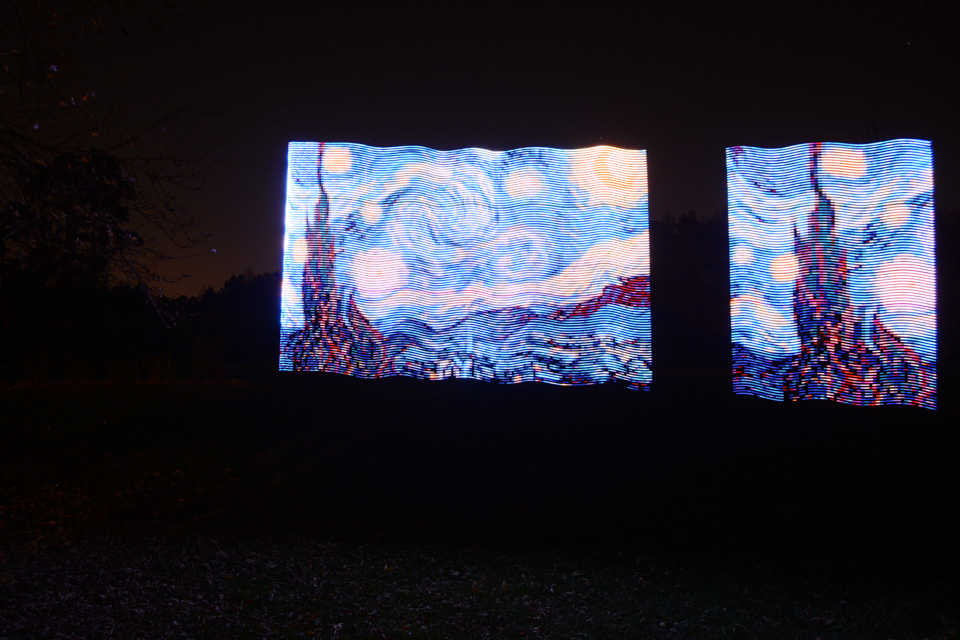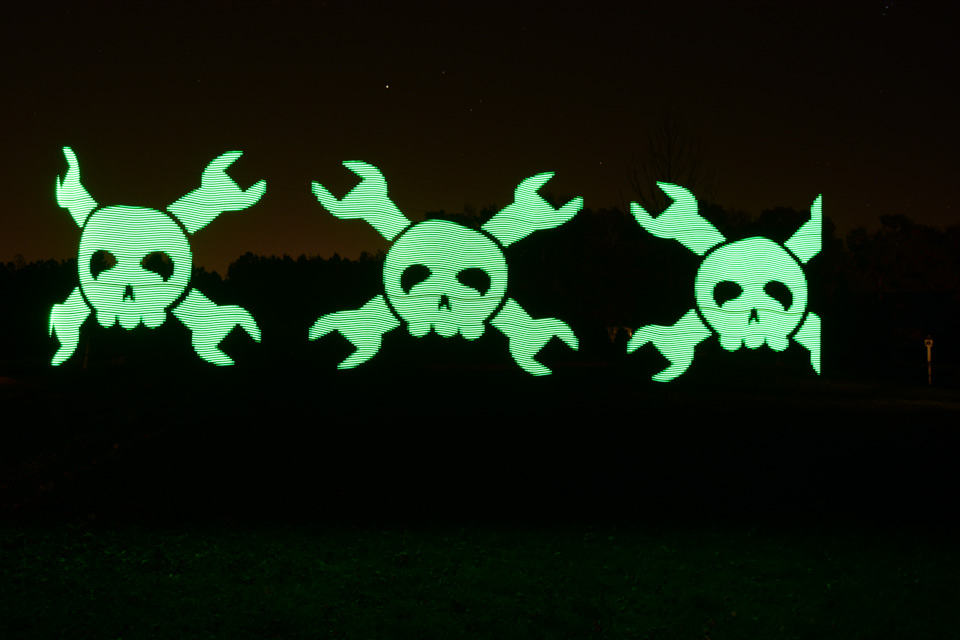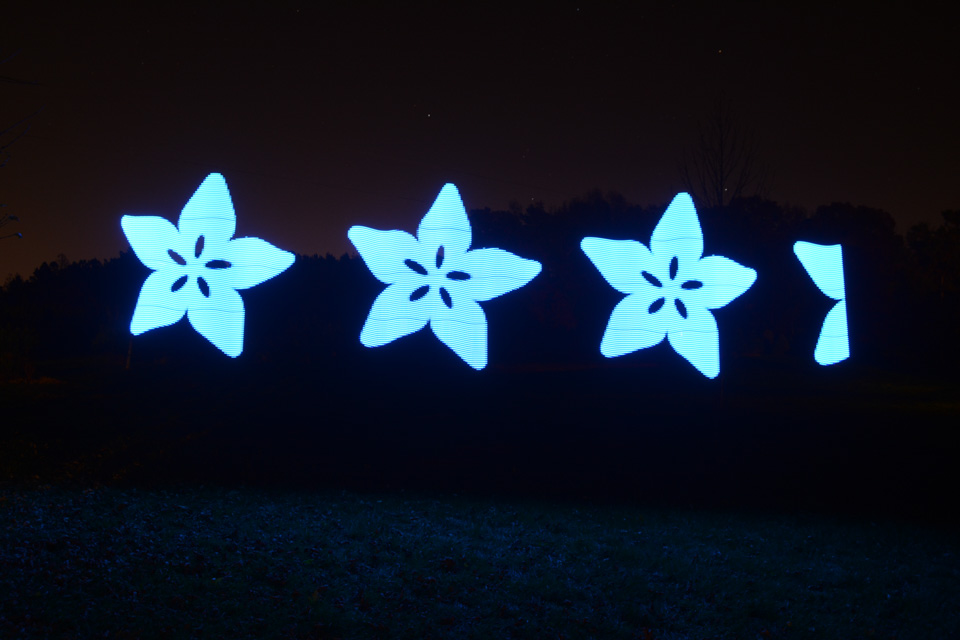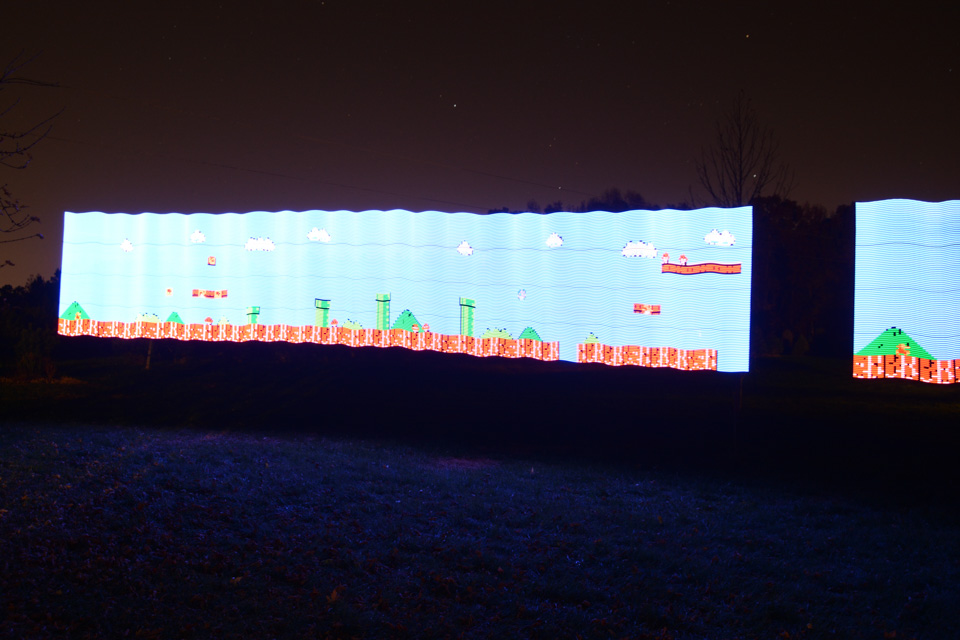Weekend Project: POVStick
To showcase how much the AllPixel and BiblioPixel can simplify your projects, we wanted to put together a fun project that really highlighted their versatility. So we decided to build a persistence of vision light painter, or POVStick as we keep calling it.
The POVStick consists of 2 meters of 48 LED/m LPD8806 strips, for a total of 96 pixels vertical resolution. This is controlled by an AllPixel connected to a Raspberry Pi B+ with a USB WiFi module. Finally, this is all powered by a 16Ah lithium-ion battery pack. It’s 2.1A per port output was more than enough to run the LEDs and Pi for quite some time.
Next is the special that makes it all work… the software. Fortunately, BiblioPixel is really easy to enhance and extend, so I came up with the LEDPOV class. This builds on top of LEDMatrix but in stead of displaying the full matrix, breaks the image up into vertical columns and displays those one at a time, split over the given total frame time.
from bibliopixel.led import *
import bibliopixel.image as img
from bibliopixel.drivers.serial_driver import *
import bibliopixel.gamma as gamma
#Takes a matrix and displays it as individual columns over time
class LEDPOV(LEDMatrix):
def __init__(self, driver, povHeight, width, rotation = MatrixRotation.ROTATE_0, vert_flip = False):
self.numLEDs = povHeight * width
super(LEDPOV, self).__init__(driver, width, povHeight, None, rotation, vert_flip, False)
#This is the magic. Overriding the normal update() method
#It will automatically break up the frame into columns spread over frameTime (ms)
def update(self, frameTime = None):
if frameTime:
self._frameTotalTime = frameTime
sleep = None
if self._frameTotalTime:
sleep = (self._frameTotalTime - self._frameGenTime) / self.width
width = self.width
for h in range(width):
start = time.time() * 1000.0
buf = [item for sublist in [self.buffer[(width*i*3)+(h*3):(width*i*3)+(h*3)+(3)] for i in range(self.height)] for item in sublist]
self.driver.update(buf)
sendTime = (time.time() * 1000.0) - start
if sleep:
time.sleep(max(0, (sleep - sendTime) / 1000.0))
#convert 6 character hex colors to RGB tuple
def hex2rgb(hex):
"""Helper for converting RGB and RGBA hex values to Color"""
hex = hex.strip('#')
if len(hex) == 6:
split = (hex[0:2],hex[2:4],hex[4:6])
else:
raise ValueError('Must pass in either a 6 character hex value!')
r, g, b = [int(x, 16) for x in split]
return (r, g, b)
argv = sys.argv
argc = len(argv)
file = ""
bright = 255
col_time = 50
bgcolor = (0,0,0)
#load in command line args
if argc > 1:
file = argv[1]
else:
print "Must specifiy an input file!"
sys.exit(2)
#get brightness value
if argc > 2:
bright = int(x=argv[2])
#col_time is time to display each vertical line for, in ms
if argc > 3:
col_time = int(argv[3])
#bgcolor is the color that will be used on transparent pixels
if argc > 4:
bgcolor = hex2rgb(argv[4])
#open the file so it is not loaded each time through
i = img.Image.open(file)
img_width = i.size[0]
totalFrameTime = img_width * col_time
print "Image Display Time: {0:.1f}s".format(totalFrameTime/1000.0)
driver = DriverSerial(LEDTYPE.LPD8806, num = 96, c_order=ChannelOrder.BRG, SPISpeed=16, gamma=gamma.LPD8806)
#automatically configure matrix width to image width.
#change povHeight to match your setup
led = LEDPOV(driver, povHeight = 96, width = img_width, rotation=MatrixRotation.ROTATE_0, vert_flip=True)
led.setMasterBrightness(bright)
img.showImage(led, imageObj = i, bgcolor=bgcolor)
try:
while True:
led.update(frameTime=totalFrameTime)
except KeyboardInterrupt:
led.all_off()
led.update()
Usage is as follows:
python LEDPOV.py image_file brightness column_time background_color
brightness: 0-255
column_time: time (ms) to display each vertical column of the image
background_color: hex color value to use for transparent pixels, otherwise black (#000000)
After a little more testing, LEDPOV will be added to the main BiblioPixel code so that it will be more easily available to all.
To use, just run the script with the desired image and set your camera to do a long exposure for slightly longer than it will take the image to display. To help with this, the script outputs the total display time of each image. You will likely need to play around with ISO and aperture settings before getting it exactly right and, of course, doing this at night will provide the best results. It is also best to add a little blank lead-in on each image so that you know when to start moving. When the lights go out have someone hit the shutter and start walking at a steady pace. If you get it right, you should get some awesome pictures like these:
To keep things fully mobile, we controlled the POV script from an SSH session running on an Android tablet. We highly recommend JuiceSSH and Hacker’s Keyboard for a great mobile SSH terminal experience.
If you like this and want to make your own, check out our Kickstarter for the AllPixel!

